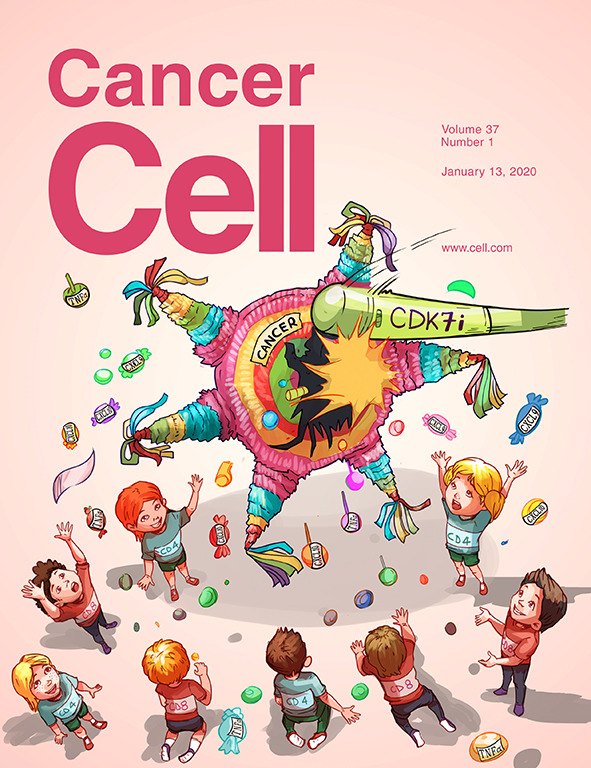Conserved spatial subtypes and cellular neighborhoods of cancer-associated fibroblasts revealed by single-cell spatial multi-omics
IF 48.8
1区 医学
Q1 CELL BIOLOGY
引用次数: 0
Abstract
Cancer-associated fibroblasts (CAFs) are a multifaceted cell population essential for shaping the tumor microenvironment (TME) and influencing therapy responses. Characterizing the spatial organization and interactions of CAFs within complex tissue environments provides critical insights into tumor biology and immunobiology. In this study, through integrative analyses of over 14 million cells from 10 cancer types across 7 spatial transcriptomics and proteomics platforms, we discover, validate, and characterize four distinct spatial CAF subtypes. These subtypes are conserved across cancer types and independent of spatial omics platforms. Notably, they exhibit distinct spatial organizational patterns, neighboring cell compositions, interaction networks, and transcriptomic profiles. Their abundance and composition vary across tissues, shaping TME characteristics, such as levels, distribution, and state composition of tumor-infiltrating immune cells, tumor immune phenotypes, and patient survival. This study enriches our understanding of CAF spatial heterogeneity in cancer and paves the way for novel approaches to target and modulate CAFs.

单细胞空间多组学揭示癌症相关成纤维细胞的保守空间亚型和细胞邻域
癌症相关成纤维细胞(CAFs)是形成肿瘤微环境(TME)和影响治疗反应所必需的多面细胞群。表征复杂组织环境中CAFs的空间组织和相互作用为肿瘤生物学和免疫生物学提供了重要的见解。在这项研究中,通过7个空间转录组学和蛋白质组学平台对来自10种癌症类型的1400多万个细胞进行综合分析,我们发现、验证并表征了四种不同的空间CAF亚型。这些亚型在不同的癌症类型中是保守的,并且独立于空间组学平台。值得注意的是,它们表现出独特的空间组织模式、邻近的细胞组成、相互作用网络和转录组谱。它们的丰度和组成因组织而异,形成TME特征,如肿瘤浸润免疫细胞的水平、分布和状态组成、肿瘤免疫表型和患者生存。这项研究丰富了我们对CAF在癌症中的空间异质性的理解,并为寻找靶向和调节CAF的新方法铺平了道路。
本文章由计算机程序翻译,如有差异,请以英文原文为准。
求助全文
约1分钟内获得全文
求助全文
来源期刊

Cancer Cell
医学-肿瘤学
CiteScore
55.20
自引率
1.20%
发文量
179
审稿时长
4-8 weeks
期刊介绍:
Cancer Cell is a journal that focuses on promoting major advances in cancer research and oncology. The primary criteria for considering manuscripts are as follows:
Major advances: Manuscripts should provide significant advancements in answering important questions related to naturally occurring cancers.
Translational research: The journal welcomes translational research, which involves the application of basic scientific findings to human health and clinical practice.
Clinical investigations: Cancer Cell is interested in publishing clinical investigations that contribute to establishing new paradigms in the treatment, diagnosis, or prevention of cancers.
Insights into cancer biology: The journal values clinical investigations that provide important insights into cancer biology beyond what has been revealed by preclinical studies.
Mechanism-based proof-of-principle studies: Cancer Cell encourages the publication of mechanism-based proof-of-principle clinical studies, which demonstrate the feasibility of a specific therapeutic approach or diagnostic test.
 求助内容:
求助内容: 应助结果提醒方式:
应助结果提醒方式:


